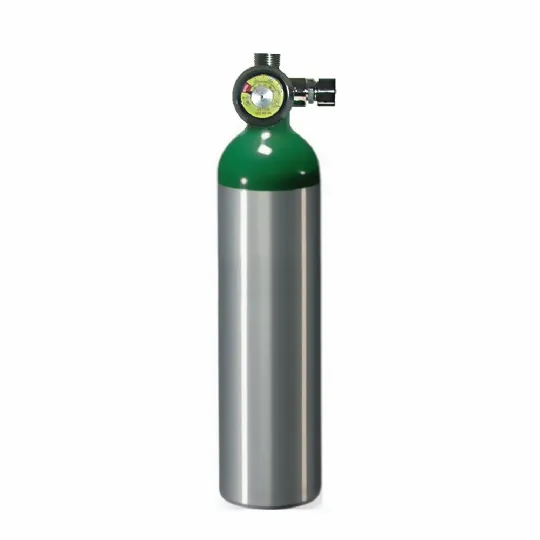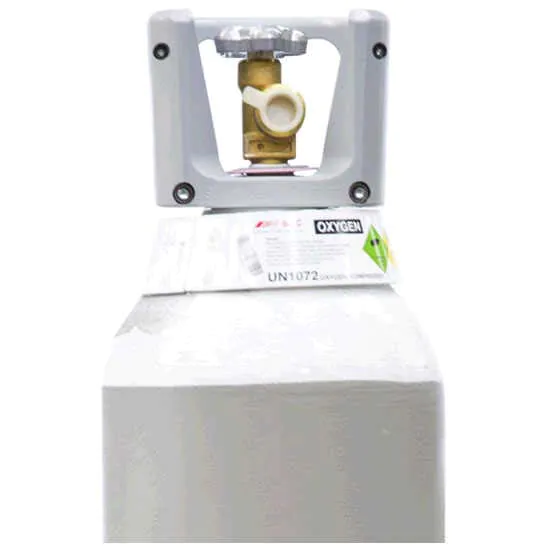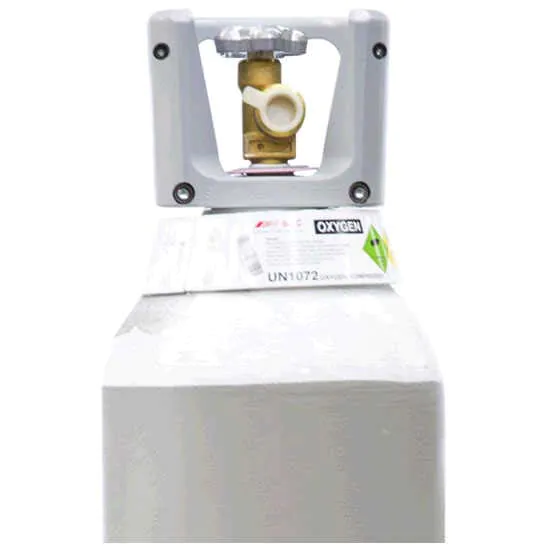$19.74
Key Features
The new intelligent Therapy Oxygen Cylinder device calculates the remaining time according to the gas content in the cylinder and the selected flow rate. The result is shown on a large and clear digital display, which indicates gas cylinder content, selected flow rate, and time remaining for patient treatment.
Safety: Audible and visual alerts advise of issues with gas supply, allowing clinical staff to focus on the patient.
Maximises gas usage: treatment time remaining shown in hours and minutes.
Convenience: a live content gauge is displayed even when the therapy device is not in use.
Posology and method of administration
Medical oxygen is administered by inhalation through the lungs. The major exception is when a metered
supply is fed into the oxygenator of an extracorporeal circulation of a cardio-pulmonary by-pass system.
For cluster headache, oxygen should be administered as soon as possible after the onset of the attack, via a
non-rebreathing facemask at a flow of 6 to 12 l/min for approximately 15 minutes.
Therapy Oxygen Therapeutic indications
Medical Therapy Oxygen is widely used in clinical practice to:
• provide a basis for most modern anesthetic techniques, including pre and postoperative management.
• restore the tissue oxygen tension towards normal by improving oxygen availability in a wide range of
conditions such as:
‐ cyanosis of recent origin as a result of cardio-pulmonary disease
‐ surgical trauma, chest wounds and rib fracture
‐ shock, severe hemorrhage and coronary occlusion
‐ carbon monoxide poisoning
‐ hyperpyrexia
‐ major trauma, i.e. road traffic accidents and gunshot wounds
‐ in the management of sudden cardiac and respiratory arrest, whether drug-induced or traumatic
• aid in the resuscitation of the critically ill when circulation is impaired
• aid in neo-natal resuscitation
• treat acute-severe headache in adults diagnosed with cluster headache
Pharmacodynamic properties
Pharmacotherapeutic group: medical gas
ATC code: V03AN01
The characteristics of medical oxygen are:
• odourless, colourless gas
• molecular weight: 32.00
• boiling point: -183.1 oC (at 1 bar)
• density: 1.335 kg/m3 (at 15ºC).
Oxygen is present in the atmosphere at 21% and is essential for life.
The basal oxygen consumption in man is about 250 ml/min for a body surface of 1.8m². It is reduced by about
10% during anesthesia and natural sleep and by about 50% for a 10ºC fall in body temperature.
Alveolar air contains about 14% oxygen (105mm Hg) and arterial blood has an oxygen tension of
97mm Hg. The difference, known as the alveolar-arterial oxygen tension gradient, increases with age. The
The difference may be as great as 30mm Hg in a healthy, elderly individual.
Oxygen in the blood is mostly combined with haemoglobin. 1.34ml per 9ml to give a maximum capacity of
20 ml per 100 ml of blood. A small amount, 0.3ml, exists in solution in the same volume of blood.
The concept of oxygen availability first described by Richards in 1943 and later elaborated by Freeman and
Nunn has been used to quantify the amount available to the body.
It can be expressed as the product of cardiac output and the blood’s oxygen content.
Available oxygen is calculated by:
(cardiac output) x Hb concentration x 1.34 x (% saturation)
Substituting the normal values for available oxygen, the amount is:
Available oxygen: ((5000ml) 15/100 x 1.34 x 95/100) = 950 ml
The average healthy individual with a basal oxygen consumption has no more than four minutes supply of
oxygen in the blood.











Reviews
There are no reviews yet.